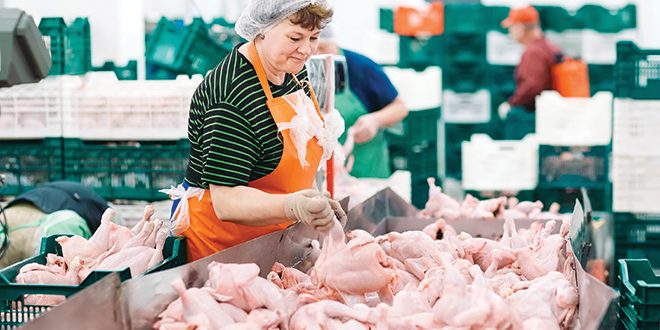A more diverse poultry industry could help ease supply chain issues and reduce cost pressures on chicken growers, farmers believe.
According to growers and industry representatives, a few major processors dominating the chicken processing industry have contributed to the supermarket shortages across Australia.
A claim rejected by those processors, who are of the opinion that the current supply chain crisis is not related to the number of processors or industry structure, and is unprecedented.
For the large processing companies that own the birds, such as Inghams and Baiada, chicken farmers are contracted to provide the equipment, sheds, land, utilities and labour necessary to grow the chickens.
NSW Farmers president James Jackson said from the hatcheries through to the processing plants and distribution, chicken meat production in Australia was dominated by a small number of vertically integrated businesses where the ownership up the supply chain is controlled by a single operator.
And that in 2020, Inghams Enterprises and Baiada Poultry supplied 70 percent of Australia’s chicken meat, while 90 percent was supplied by only six processors.
While supermarket shortages were as a result of the impact of COVID-19 on the workforce, Mr Jackson was of the belief that the concentration of ownership in chicken processing played a part in reducing supply options.
“Chicken processors, red meat processors, truckies and warehouse workers – no one has been spared from COVID,” Mr Jackson said.
“More broadly we have raised the importance of having options in our supply chain so that when one or two big companies have issues – as we have seen recently – our dinner plates aren’t left empty.”
NSW Farmers has described the chicken meat industry as a “regional monopsony environment”.
A monopsony is a market dominated by a single buyer with the power to influence prices.
Australian Chicken Growers Council executive officer Michael Moore said since the turn of the century smaller processors has been absorbed by larger businesses, leading to decreasing levels of competition at the processing level and as a result monopsony conditions.
“Processors are more able to put in place pricing that may be pushing growers to the edge of unprofitability,” Mr Moore said.
“If they are the only person out there offering a contract, it’s take it or leave it – that is the price.”
In the past, processors used to be prepared to issue contracts for up to 10 years, which would cover the cost of building new farm infrastructure.
However, according to Mr Moore, contract terms have fallen steadily over the years with many growers on yearly contracts.
NSW Farmers poultry meat manager Peta Easey said chicken growers were forced to compete in a pool system, and the final buying price can vary significantly from batch to batch.
According to Ms Easey, a decade ago in NSW there were nine significant chicken meat processing plants owned by six different companies, now there are four processing plants in the state owned by only two companies.
Processing plants where chickens are cut into pieces – such as thigh and breast fillets, resulting in more whole chickens shipped to supermarkets and other retailers – have been severely impacted by staff shortages.
Mr Moore said that meat processing plants are vulnerable to the spread of viruses because people work in close proximity to each other.
However, industry reports that staff shortages were not only at processing plants but across the whole supply chain, including transport.
The perishable agricultural goods inquiry report released by the Australian Competition and Consumer Commission in 2020 acknowledged the power imbalance in the chicken meat industry.

